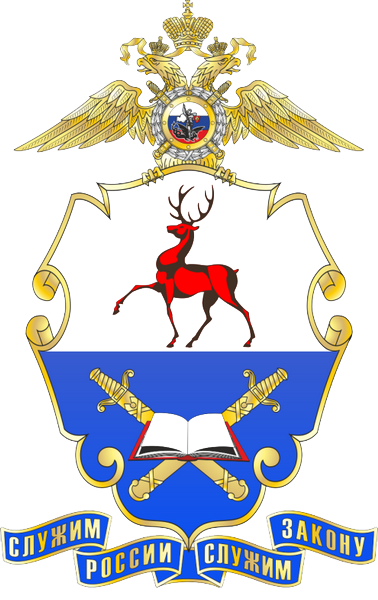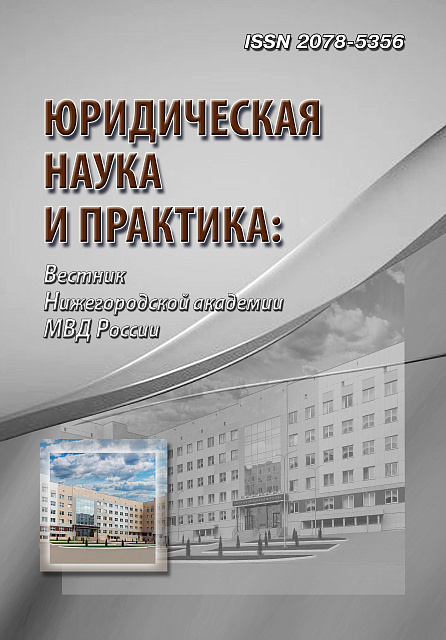The article analyzes new types of crimes committed on or through the Internet. Such crimes include Internet poisoning, driving to suicide, propaganda of extremism, skulshuting, distribution of pornographic materials, Internet pedophilia, sale of first sex, extortion, production and distribution of child pornography, participation in the webcam industry. The interpretation of the terms used to designate new types of crimes is given: cybermobbing and cyberbullying, cyber suicide, grooming, cyberbully, serial virgins, Internet pedophilia, webcam industry, premium and freemium. The role and tasks of the state in countering online and offline crime are justified.
Internet, Internet poisoning, children and adolescents, crime, suicide, extremism, child pornography, webcam, fraud, extortion, pedophilia, special software
1. Kokin D. M. On the improvement of criminal-legal norms establishing responsibility for the non-interest turnover of weapons. Bulletin of St. Petersburg University of the Ministry of Internal Affairs of Russia, 2015, no. 2 (66), pp. 74-78. (In Russ.)
2. Sochilina E. N., Kovorotusha I. V. General characteristics of crimes against sexual inviolability of minors committed with the use of the Internet. Scientific portal of the Ministry of Internal Affairs of Russia, 2018, no. 4 (44), pp. 21-25. (In Russ.)
3. Drucker M. M. Ways of broadcasting destructive semantic components of social media content. Voprosy journalistiki, pedagogika, linguoznaniya, 2020, no. 2, pp. 144-150. (In Russ.)
4. Smirnova A. A., Zakharova T. Y., Sinogina E. S. Cyber threats to the safety of adolescents. Ped.Rev, 2017, no. 3 (17), pp. 99-107. (In Russ.)
5. Khanina Y. Yu., Elagina M. Yu. Theoretical review of factors and causes of adolescent suicidal behavior in Russia and abroad. Young researcher Don, 2020, no. 4 (25), pp. 84-89. (In Russ.)
6. Smirnova A. A., Sinogina E. S. Influence of the computer and the Internet on the physical and mental health of schoolchildren. Narodnoe obrazovanie, 2017, no. 1-2 (1460), pp. 199-204. (In Russ.)
7. Alieva E. A., Kuminova E. Z., Yurov I. A. The use of modern gadgets. Information technologies in the adolescent environment. Young scientist, 2018, no. 1 (15), pp. 101-106. (In Russ.)
8. Ventsel S. V. Features of monitoring illegal content on the Internet in the framework of cybervolunteer activity. Review.NCPTI, 2021, no. 1 (24), pp. 30-37. (In Russ.)
9. Mikheev D. Y. Features of subculturalization of destructive movement “Columbine” among young people and its connection with terrorism. Young Scientist, 2021, no. 50 (392), pp. 293-295. (In Russ.)
10. Alyoshin V. A., Zhilina V. S., Korshunov A. V., Raboyev I. M., Raboyev N. M. On approaches to the detection of traffic sniffing in the Tor anonymous network. Voprosy cybersecurity, 2013, no. 2, pp. 2-8. (In Russ.)
11. Mironova S. M., Simonova S. S. Protection of the rights and freedoms of minors in the digital space. All-Russian criminological journal, 2020, no. 2, pp. 234-241. (In Russ.)
12. Alikhadzhieva I. S. On new trends of modern sex industry and its criminological risks. Actual problems of Russian law, 2021, no. 4 (125), pp. 160-173. (In Russ.)
13. Ilnitsky A. S. Criminological risks of intimate communication on the Internet. Humanities, socio-economic and social sciences, 2021, no. 9, pp. 106-109. (In Russ.)
14. Maikulov J. J. Crimes against children using the Internet. Scientific and methodological electronic journal “Concept”, 2017, vol. 39, pp. 2636-2640. (In Russ.)
15. Kowalski A. l. “There is no friendship between a 15-year-old girl and a 30-year-old teacher”. What is grooming and how to protect your child from it. URL: https://takiedela.ru/notes/gruming/ (accessed 29.10.2023). (In Russ.)
16. Matantseva T. N. Factors of victimization behavior of adolescents as a social problem of psychological science. Scientific and methodological electronic journal “Concept”, 2016, vol. 8, pp. 74-81. (In Russ.)
17. Soloviev V. S. Use of the social segment of the Internet for committing encroachments on the sexual inviolability of minors. URL: https://uchimsya.com/a/lQMe0edr accessed 29.10.2023). (In Russ.)
18. Andriyanov N. A., Dementiev V. E., Tashlinsky A. G. Detection of objects in the image: from Bayes and Neyman-Pearson criteria to detectors based on neural networks EfficientDet. Computer Optics, 2022, no. 1, pp. 139-159. (In Russ.)
19. Bersenev E. V. Relation of the criminal law of the Russian Federation to the phenomenon of “webcam”. Voprosy Rossiyskaya Justicia, 2021, no. 15, pp. 485-491. (In Russ.)
20. Beletskiy I. A., Karpov K. N. Criminal-legal assessment of illegal turnover of pornographic materials using the Internet. Vestnik BelJUI of the Ministry of Internal Affairs of Russia, 2023, no. 1, pp. 36-41. (In Russ.)
21. Kufleva V. N., Litovchenko A. I. Webcam-industry - a new threat to public morality. Society: politics, economics, law, 2022, no. 7 (108), pp. 75-81. (In Russ.)
22. Yengalychev V. F., Zaitseva O. V. Detection of child pornography objects in virtual space by means of deciphering names and tags. Vestnik Tomsky State University, 2021, no. 471, pp. 235-241. (In Russ.)
23. Ryzhov V. B. Interaction of the Member States of the European Union in the fight against sexual exploitation of children and child pornography. International Law and International Organizations, 2021, no. 2, pp. 77-91. (In Russ.)
24. Stepanova O. Y. The problem of bringing to criminal responsibility for pedophilia in social networks. Bulletin of St. Petersburg University of the Ministry of Internal Affairs of Russia, 2015, no. 2 (66), pp. 78-83. (In Russ.)
25. Badoyan S. M. Criminalistic peculiarities of establishing the persons who committed the distribution of materials with pornographic images of minors on the Internet. Criminalistics: yesterday, today, tomorrow, 2023, no. 1 (25), pp. 35-44. (In Russ.)
26. Yankovsky R. M. Social networks: issues of protection of exclusive rights of users (Article). Intellectual Property Law, 2017, no. 2017, pp. 119-131. (In Russ.)












